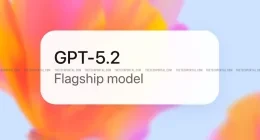Black holes are called black for a reason. The pull of gravity is so strong that not even light can escape it. However, since when as something as small as that has stopped our race from trying. This very week an array of the most powerful radio telescopes on earth will attempt to capture an image of the super massive black hole that lies at the center of the Milky Way, that is our own galaxy.
So here is the thing with black holes. They are usually formed when a massive star collapses in on itself and the gravity becomes so excruciatingly high that nothing can escape. However, this also means that even out most powerful normal radio telescopes can’t see even the closest known black hole to Earth.
This particular black hole is also known as Sagittarius A. Researchers can locate it only because all the stuff that it pulls inwards into itself, slides in at a very high speed and basically heats up. This makes the edge of the black hole very bright. However, the center is still completely dark. Scientists are attempting to get over this particular hurdle by combining some of the world’s most powerful telescopes into a single, Event Horizon Telescope (EHT).
Over the next decade, our group proposes to combine existing and planned millimeter/submillimeter facilities into a high-sensitivity, high angular resolution Event Horizon Telescope that will bring us as close to the edge of black hole as we will ever come. This effort will include development and deployment of submillimeter dual-polarization receivers, highly stable frequency standards to enable VLBI at 230-450 GHz, higher-bandwidth VLBI backends and recorders, as well as commissioning of new submillimeter VLBI sites.
The EHT consists of a number of powerful radio telescopes stretched across the world and they will be together attempting to study the black hole by observing the edges we were talking about a bit ago. These observations are expected to run between April 5 and April 14 and it will be a major breakthrough for humanity if they succed in their mission.
You can know more about the topic by visiting this link.
The Tech Portal is published by Blue Box Media Private Limited. Our investors have no influence over our reporting. Read our full Ownership and Funding Disclosure →





